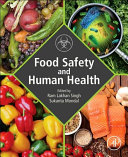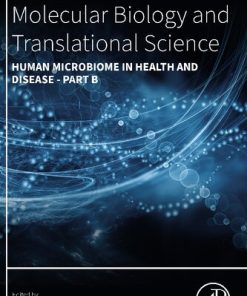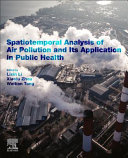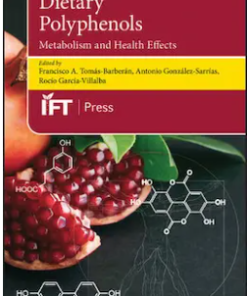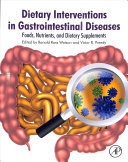Advances in Dietary Lipids and Human Health 1st edition by Duo Li 0128242193 9780128242193
$50.00 Original price was: $50.00.$25.00Current price is: $25.00.
Advances in Dietary Lipids and Human Health 1st edition by Duo Li – Ebook PDF Instant Download/DeliveryISBN: 0128242193, 9780128242193
Full download Advances in Dietary Lipids and Human Health 1st edition after payment.
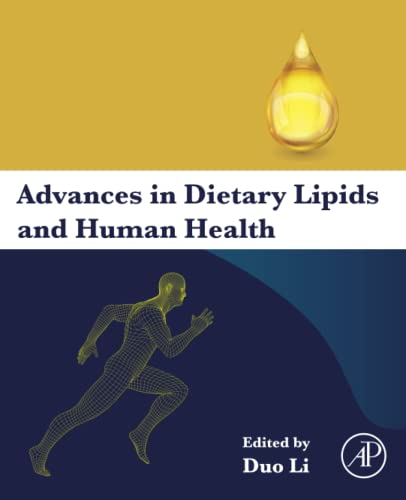
Product details:
ISBN-10 : 0128242193
ISBN-13 : 9780128242193
Author: Duo Li
Advances in Dietary Lipids and Human Health systematically summarizes recent research advances in dietary lipids and human health. The book proposes a strategy for the prevention of NCDs and the management of population and personal health through the rational use of dietary fat. It covers the relationship between total lipids, saturated and unsaturated fatty acids and NCDs, and other uncommon fatty acids, such as conjugated fatty acids, middle and short chain fatty acid, furan fatty acids, n-3 docosapentaenoic acid (DPA), and structured fat.
Advances in Dietary Lipids and Human Health 1st Table of contents:
Chapter 1: Overview of dietary lipids and human health
Abstract
1.1: Introduction
1.2: Dietary lipids
1.3: Dietary total fat intake and human health
1.4: Dietary saturated fat intake and human health
1.5: Dietary monounsaturated fat intake and human health
1.6: Dietary polyunsaturated fat intake and human health
1.7: Conclusion
References
Chapter 2: Fatty acids and telomeres in humans
Abstract
2.1: Introduction
2.2: Dietary fatty acids and telomeres
2.3: Cross-sectional and prospective studies
2.4: Randomized controlled trials
2.5: Discussion
2.6: Conclusion
References
Chapter 3: The role of lipids in the brain
Abstract
3.1: Introduction
3.2: Properties of brain fatty acids
3.3: Where are brain lipids synthesized? In the brain or imported from blood?
3.4: Effects of exogenous/dietary agents on brain lipids
3.5: Conclusions
References
Chapter 4: Lipids and mental health
Abstract
4.1: Introduction
4.2: Metabolism of lipids in the brain
4.3: Lipids and inflammation and oxidative stress
4.4: Lipids, microbiota, and immune system
4.5: Lipids and nervous system
4.6: Can omega-3 fatty acids be used as treatment? How to use them?
4.7: Conclusion
References
Chapter 5: Diet in different fat content and cardiometabolic health
Abstract
5.1: Introduction
5.2: Diet with different fat-to-carbohydrate ratios and cardiometabolic health
5.3: What we previously conducted
5.4: Conclusions
References
Chapter 6: Dietary lipids and malignant tumor of the digestive system
Abstract
6.1: Dietary lipids and gastric cancer
6.2: Dietary lipids and liver carcinoma
6.3: N-3 PUFAs and colon cancer
6.4: Conclusion
References
Chapter 7: Dietary lipids and breast cancer
Abstract
7.1: Introduction
7.2: Epidemiological evidence regarding dietary lipids intake and breast cancer
7.3: Effects of n-3 PUFA on breast cancer development
7.4: Conclusions
References
Chapter 8: Marine lipids and diabetes
Abstract
8.1: Introduction
8.2: Marine n-3 PUFAs and T2D prevention
8.3: Marine n-3 PUFAs and T2D management
8.4: Marine n-3 PUFAs and gestational diabetes
8.5: Conclusion
References
Chapter 9: Lipids and nonalcoholic fatty liver disease
Abstract
9.1: Introduction
9.2: Fatty acids and NAFLD
9.3: Factors affecting NAFLD on biomarkers of NAFLD
9.4: Dose–response relationship between n-3 PUFA intake and biomarkers
9.5: The underlying mechanisms why n-3 PUFAs protect against NAFLD
References
Chapter 10: Dietary lipids and pulmonary diseases
Abstract
10.1: Pulmonary diseases
10.2: Dietary lipids and clinically manifest asthma
10.3: Dietary lipids and pneumonia
10.4: Dietary lipids and chronic obstructive pulmonary disease
10.5: Dietary lipids and pulmonary fibrosis
10.6: Dietary lipids and lung cancer
10.7: How do dietary lipids influence pulmonary diseases?
10.8: Conclusion
References
Chapter 11: Dietary lipids and hypertension
Abstract
11.1: Introduction
11.2: General background on the relationship between lipids and hypertension
11.3: Meta-analytic evidence based on dietary intervention studies
11.4: Evidence based on the relevant epidemiological studies
11.5: Biological mechanisms for the antihypertensive effects of dietary n-3 lipids
11.6: Conclusion
References
Chapter 12: Postprandial lipemia and the relationship to health
Abstract
12.1: Introduction
12.2: Generation of an atherogenic postprandial phenotype
12.3: Mechanisms linking postprandial lipids to atherogenesis
12.4: Modulators of postprandial lipemia
12.5: Meal timing a novel mediator of postprandial triglycerides
12.6: Nonmodifiable factors: Evidence of ethnic/genetic influences on postprandial lipemia
12.7: Assessment of postprandial lipemia is important for CVD risk screening
12.8: Conclusion
References
Chapter 13: The metabolites derived from lipids and their effects on human health
Abstract
13.1: Introduction
13.2: The gut microbiota and lipid metabolism
13.3: Effects of lipid metabolites on CVDs
13.4: Metabolites derived from lipids that correlate with cancer incidence
13.5: Metabolites derived from lipids that correlated with neurodegenerative disease
13.6: Conclusions
References
Chapter 14: Marine n-3 polyunsaturated fatty acids and inflammatory diseases
Abstract
14.1: Marine n-3 polyunsaturated fatty acids and inflammatory processes
14.2: Marine n-3 polyunsaturated fatty acids and inflammatory diseases
14.3: What are the gaps in evidence that need attention?
References
Chapter 15: Lipids and birth defects
Abstract
15.1: Introduction
15.2: Evidence relating lipids to birth defects risk in human studies
15.3: Evidence relating lipids to birth defects in animal studies
15.4: The possible mechanism for the relationship between lipids and birth defects
15.5: Conclusion
References
Chapter 16: Conjugated linolenic acids and their bioactivities
Abstract
16.1: Introduction
16.2: Natural sources and utilization of CLNA
16.3: The metabolism of CLNA
16.4: CLNA and carcinogenesis
16.5: CLNA and lipid metabolism
16.6: Effect of conjugated linolenic acid on obesity
16.7: Effect of conjugated linolenic acid on type 2 diabetes mellitus
16.8: Effect of conjugated linolenic acid on inflammatory bowel diseases
16.9: Antioxidant activity of CLNA
16.10: Conclusion
References
Chapter 17: N-3 polyunsaturated fatty acid and homocysteine metabolism
Abstract
17.1: Introduction
17.2: Epidemiological evidence regarding n-3 PUFAs, genetics, and homocysteine levels
17.3: Effects of n-3 PUFAs on homocysteine: Evidence from animal studies and cell culture
17.4: Experimental epidemiological evidence regarding the effects of n-3 PUFAs on homocysteine metabolism
17.5: Mechanisms by which n-3 PUFAs reduce homocysteine levels and future research
17.6: Conclusion
References
Chapter 18: Effect of 1,3-diacylglycerol on cardiometabolic risk
Abstract
18.1: Introduction
18.2: The 1,3-diacylglycerol
18.3: Effects of 1,3-diacylglycerol on cardiometabolic risk
18.4: Metabolism of 1,3-diacylglycerol
18.5: Supplementation of 1,3-diacylglycerol
18.6: Conclusion
References
Chapter 19: Palmitoleic acid in health and disease
Abstract
19.1: Introduction
19.2: Is palmitoleic acid a novel lipid hormone?
19.3: Effects of palmitoleic acid on metabolic diseases
19.4: What are the gaps in evidence that need attention?
References
Chapter 20: Ximenynic acid and its bioactivities
Abstract
20.1: Introduction
20.2: Bioactivities, functions, and applications of ximenynic acid
20.3: Safety of ximenynic acid
20.4: Physical characteristics and natural distribution
20.5: Preparation methods of natural ximenynic acid
20.6: Synthesis of ximenynic acid
20.7: Conclusion and future studies of ximenynic acid
References
Chapter 21: Application of phytosterols in management of plasma cholesterol
Abstract
21.1: Introduction
21.2: Structure diversity and sources of dietary phytosterols
21.3: Cholesterol-lowering effects
21.4: Cholesterol-lowering mechanisms
21.5: Commercial applications and regulated policy
21.6: Conclusive remarks and future perspectives
References
Chapter 22: Lipids in breast milk and formulas
Abstract
22.1: Introduction
22.2: Composition of breast milk lipids
22.3: Composition of formulas in lipids
22.4: Breast milk and formula lipid nutrition
22.5: Conclusion
People also search for Advances in Dietary Lipids and Human Health 1st:
role of lipids in cardiovascular disease ppt
how are dietary lipids transported
what are dietary lipids
advanced nutrition lipids
advantages of lipids
Tags: Advances, Dietary Lipids, Human Health, Duo Li
You may also like…
Earth Sciences - The Environment
Medicine - Anatomy and physiology
The Human Body in Health and Illness 7th Edition Barbara Herlihy
Fiction - Westerns
Biology and other natural sciences - Microbiology
Human Microbiota in Health and Disease: From Pathogenesis to Therapy Tungland
Relationships & Lifestyle - Diet & Nutrition
Dietary Polyphenols: Metabolism and Health Effects Francisco A. Tomás-Barberán
Science (General)




